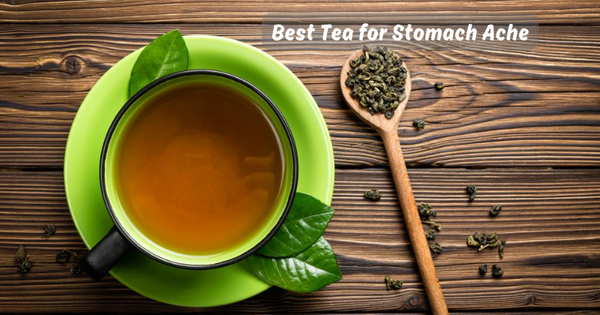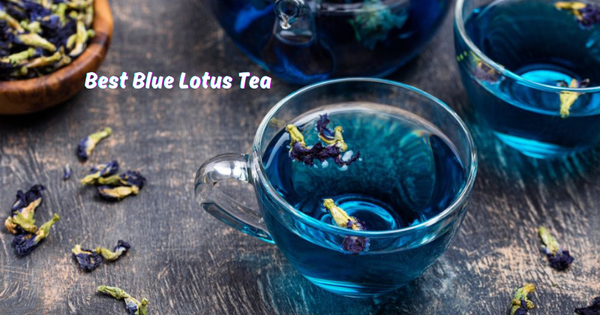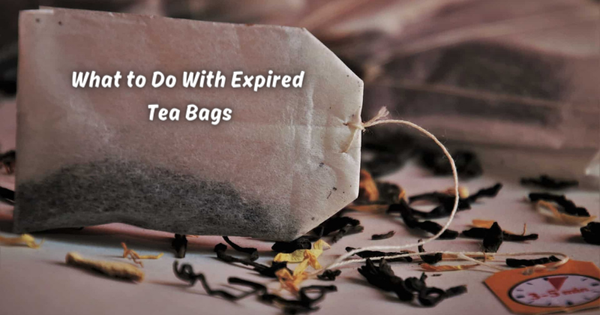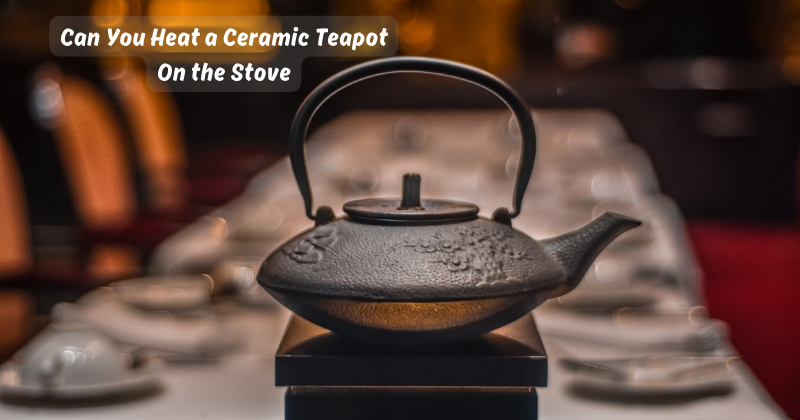Introducing the age-old debate of whether hot tea and Glass make for a compatible duo. The traditional ceramic or porcelain teacup has long been the vessel of choice for tea enthusiasts, prized for its ability to retain heat and enhance the tea-drinking experience.
However, the allure of glass teaware has become increasingly tempting. Advocates argue that high-quality, heat-resistant Glass allows for a visually stunning display of tea's vibrant colors and delicate leaves.
Yet, skepticism lingers. Can Glass cup withstand the scalding embrace of freshly brewed hot tea without compromising taste or safety? Let's explore the merits and pitfalls of placing piping hot tea into the transparent confines of Glass.
History of Glass Teaware
Glass has been used for centuries to make teapots and cups, with the earliest evidence dating back to ancient China in the 2nd century BC. However, it wasn't until the 18th century that glass teaware became more widely available and popularized by European tea culture.
Initially, Glass was seen as a luxurious material reserved for the elite class. But with technological advancements and mass production, glass teaware became more affordable and accessible to the general public. Hot liquid into glass vessels was a matter of convenience and aesthetics rather than practicality.
Today, Glass remains a popular choice for tea lovers worldwide, with many variations, such as borosilicate glass, known for its durability and resistance to thermal shock. Hot beverages, including tea, can be safely poured into this type of Glass without fear of shattering. Use as glass coffee cups or teapots have become common in homes and cafes.
Can Hot Tea Crack Glass?
The simple answer is yes: hot tea can crack Glass. However, it's not as straightforward as it may seem. The likelihood of Glass cracking when hot tea is poured into it depends on several factors.
Firstly, the type and quality of Glass used play a significant role. As mentioned, borosilicate glass is designed to withstand high temperatures and thermal shock. Other types of Glass, such as tempered or heat-tempered Glass, are also suitable for hot beverages but may not be as resistant to sudden changes in temperature.
Secondly, the temperature of the tea itself is a crucial factor. If the tea is boiling or extremely hot, it can cause drastic temperature changes in the Glass and lead to cracking. Let boiling hot tea cool down slightly before pouring it into a glass vessel is best. Pouring hot liquids into a pre-warmed glass can also help prevent cracking.
Lastly, the surrounding environment's temperature can also impact Glass's thermal shock resistance. For example, drinking iced tea in a hot room can cause the Glass to crack due to the drastic difference in temperature between the liquid and its surroundings.
Can You Put Hot Tea In Glass?
Here, we will discuss the main question: Can you put hot tea in Glass? The answer is a resounding yes, under the right conditions. As mentioned earlier, high-quality and heat-resistant Glass such as borosilicate or tempered Glass can safely withstand hot tea without cracking.
However, it's essential to exercise caution when handling hot liquids and glass vessels. It's always advisable to let the tea cool down slightly before pouring it into a glass, and using pre-warmed glasses can also help prevent any accidents.
Inner and outer layers of glassware should also be considered as they affect the durability and resistance to heat. If the outer layer remains cool and inner layer is hot, then there are high chances of glass cracking.
Additionally, it's crucial to note that not all types of Glass are suitable for hot liquids. Regular household drinking glasses or delicate decorative glasses may not be able to withstand thermal shock and could potentially shatter when exposed to hot tea. Glass heating up in a microwave can be dangerous, so it's best to avoid using glassware not specifically designed for holding hot liquids.
Tips for Enjoying Hot Tea in Glass
For those who have their heart set on using glass teaware for hot tea, here are some additional tips to make the experience more enjoyable and safe.
Pre-warm glasses:
As mentioned, pouring hot tea into pre-warmed glasses can help prevent cracking. Simply rinse the Glass with hot water before adding the tea. Pour hot coffee, hot chocolate, or any similar beverage in pre-warmed glasses to enjoy them without compromising their quality.
Use a coaster:
Consider using a coaster to further protect your glass teaware from sudden temperature changes. This will help insulate the Glass and prevent it from coming into direct contact with cold surfaces, reducing the risk of cracking.
Invest in high-quality glassware:
As with any product, investing in high-quality glassware can make all the difference. Look for heat-resistant options such as borosilicate or tempered Glass, and avoid using delicate glasses not specifically designed for hot liquids.
Enjoy slowly:
Lastly, be mindful of the temperature of your tea and take frequent sips to enjoy it while it's still warm. Allowing hot drink tea to sit in a glass for an extended period can increase the chances of cracking, especially if the Glass is not heat-resistant. Savoring your tea slowly will also allow it to cool down slightly before taking another sip.
With these tips in mind, you can confidently pour your hot tea into a glass and enjoy its taste and aroma without compromising safety. Glass teaware is a popular choice for many tea enthusiasts. With proper care and precautions, it can provide a delightful tea-drinking experience.
How Long Can A Glass Cup Keep Tea Warm?
The length of time a glass cup can keep tea warm depends on various factors such as the type and quality of Glass, the surrounding environment's temperature, and how well-insulated the cup is. However, generally speaking, glass cups are not known for their ability to retain heat for extended periods.
Unlike materials like ceramic or clay, glass does not have high thermal retention properties. It cools down quickly when exposed to colder temperatures, so hot tea in a glass cup will likely cool down faster compared to other materials. However, pre-warmed glasses and using a coaster can help retain the tea's heat for a little longer.
Place A Metal Spoon In The Glass To Prevent Cracking
One popular myth about hot tea, and Glass is that placing a metal spoon in the Glass before pouring hot liquid can prevent cracking. This may seem plausible as metal is a better conductor of heat than Glass and could absorb some heat from the tea.
However, this method has not been scientifically proven to work. While the spoon may slightly reduce the temperature of the tea, it's not enough to prevent drastic temperature changes in the Glass. It's best to use heat-resistant glassware and follow the tips mentioned above for a safe and enjoyable hot tea experience in Glass. So enjoy your favorite cup of hot tea in a beautiful glass vessel without fear of cracking.
What Is The Best Cup For Tea?
While glass teaware can be a great option for enjoying hot tea, it may not be the best choice for everyone. Some people prefer ceramic or porcelain cups, while others enjoy the traditional style of drinking tea from a small handleless cup called a gaiwan.
Ultimately, the best cup of tea suits your preferences and enhances your enjoyment of the beverage. Some may prefer the aesthetic appeal of Glass, while others may prioritize functionality and heat retention. It's essential to find a cup that is comfortable to hold, easy to clean and enhances the flavour and aroma of your tea.
Is Ceramic A Safe Material?
Ceramic is a popular material for making teaware and is generally considered safe for hot liquids. However, it's essential to note that not all ceramic cups are created equally, and some may contain lead or other harmful substances.
When purchasing ceramic teaware, look for options that are labelled as food-safe and non-toxic. It's also recommended to avoid using antique or vintage ceramic cups as they may contain lead glazes. A lead-testing kit can also provide peace of mind when using ceramic teaware.
FAQs
Are glass mugs safe for hot drinks?
Glass mugs specifically designed for hot drinks are generally safe to use. However, checking the label or manufacturer's instructions is essential to ensure they are heat-resistant. Mostly glass cups are heat resistant, but some are not suitable for hot drinks.
Can Glass withstand boiling water?
Not all types of Glass can withstand boiling water. It's crucial to use heat-resistant options such as borosilicate or tempered Glass specifically designed for hot liquids. Also, allowing the boiling water to cool down slightly before pouring it into a glass can help prevent cracking.
Can I make tea in a glass?
Yes, you can make tea in a glass if it is heat-resistant and specifically designed for hot liquids. Investing in high-quality glassware and following precautions to avoid thermal shock is also important. But glass coffee mugs or teapot, borosilicate glass has become a common choice for many homes and cafes.
Can I put hot tea in a glass pitcher?
It's generally not recommended to pour hot tea into a glass pitcher as it may not be designed to withstand sudden temperature changes. It's best to use heat-resistant options such as borosilicate or tempered Glass specifically designed for hot liquids.
Conclusion
In conclusion, the question of placing hot tea in Glass is a nuanced exploration of tradition, aesthetics, and practicality. While the enduring appeal of ceramic teacups is rooted in their heat-retaining properties, the growing trend of using heat-resistant Glass challenges conventional norms. The allure of visually appreciating the tea's colors and leaves through transparent walls adds an aesthetic dimension to the tea-drinking ritual.
Yet, concerns about Glass's ability to withstand high temperatures and potential impacts on taste and safety persist. As tea enthusiasts navigate this conundrum, the choice between Glass and traditional teaware ultimately hinges on personal preferences, striking a delicate balance between tradition and the allure of modern presentation.
Each vessel carries its charm, making the tea-drinking experience a deeply subjective and evolving journey.







